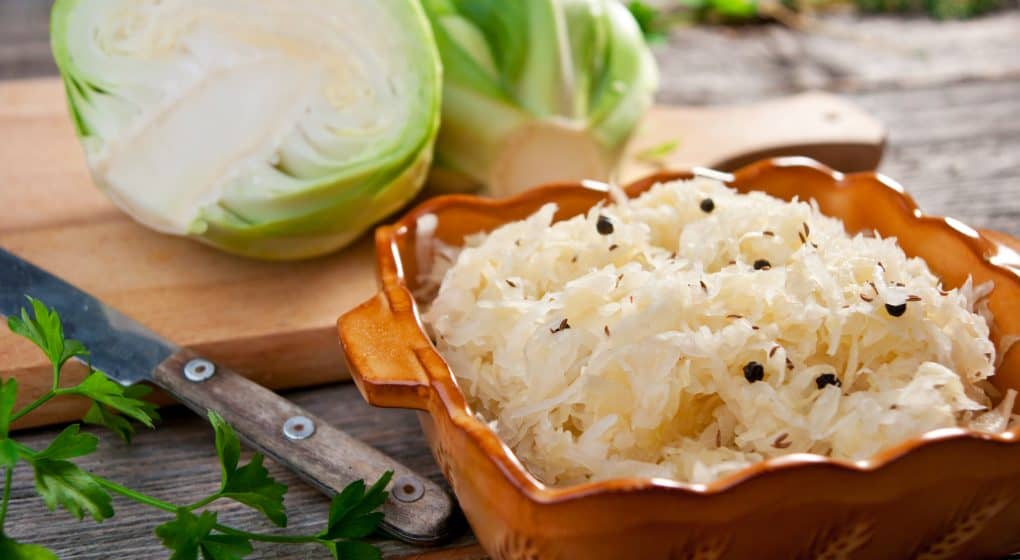
For many centuries, canning and fermentation were two of the best methods for preserving all types of food long after they had been harvested. While modern preservation techniques and refrigeration have made these methods obsolete to a degree, some devoted home chefs have recently begun to reappreciate the unique flavors and health benefits that only a fermented food product can provide.
Truth be told, I used to ignore fermented food recipes, believing that they were better left in the past with many of my mom’s old recipes. But after experimenting with a few fermented recipes passed around in my friend group, I became a convert to the gospel of fermented foods. Now, my cabinets and refrigerator are rarely without a jar or two of my family’s favorite fermented foods.
Many of those old-fashioned recipes are now among my favorites, too, which is why I want to pass along a useful variety of recipes to you today. I hope that you’ll try out some of these easy-to-make fermented food recipes in your home kitchen so that you and your family can begin to taste the difference in this age-old food preparation tradition.
#1 – Sauerkraut is the Easiest Fermented Food to Make at Home
When you are just starting out and learning the ropes of home fermentation, it is best to start with simple recipe. Sauerkraut is a delicious and nutritious place to start given that it requires very few ingredients and provides great opportunities for customization based upon your family’s taste preferences.
At their base, most sauerkraut recipes call for similar ingredients, such as fresh cabbage, water, and salt (sea salt works best). (source) However, there are some best practices that can really bring out the full flavor of your finished fermented vegetables. First, instead of pounding the cabbage, consider applying other weights while the fermentation takes places to draw out the most flavor. Also, consider allowing fermentation to continue for up to 2 weeks to improve the finished product’s overall texture.
Whether made at home or obtained from a can, sauerkraut is an excellent source of vitamins C and K, as well as a minor source of vitamin B6 and folate. (source) Sauerkraut is also exceptionally versatile when it comes to serving it with a meal. Whether on top of a grilled bratwurst or eaten as a refreshing side, your fermented sauerkraut will far outrank anything you can get from the store.
#2 – Sour Pickles that Taste Just Like Store Bought Brands
When most folks think of a fermented food product, their mind often jumps immediately to the delicious snap of gherkin or dill pickle. Whether eaten alone or as an ingredient on a sandwich, pickles are another easy-to-make fermented food product that your whole family can enjoy. In addition, there really is something special about creating a food product you’ve only ever bought from the store.
Interestingly, there are actually three primary types of fermented pickles you can make at home : brine pickles, vinegar pickles, and canned pickles. (source) In terms of flavor, the best recipes call standard pickling cucumbers to be added to a 2% brine of sea salt, dill, bay leaf, peppercorn, mustard seed, and garlic. After being allowed to rest for a number of days, you’ll notice bubbles forming in the now cloudy brine. This a sign that your pickles are nearing their sour flavorful peak.
In terms of nutrition, your homemade sour pickles will be naturally low in sugar and calories. (source) Moreover, the cucumbers you use as a base will pass along a portion of the naturally high vitamin A and K content into whatever food product you add your finished pickles to. Though the brine might add to the overall sodium content, you can also reduce such additions by lowering the sea salt content in the brine.
#3 – Sourdough Bread is Versatile and Delicious
When I was young, all of my friends believed that white bread was the best bread option in the whole world. But while everyone else enjoyed their Wonder Bread, I simply could not get enough sourdough in my diet. This tangy bread is useful for everything from toast to the most delicious grilled cheese you’ve ever had. And wouldn’t you know it? You can ferment your own sourdough at home with just a bit of work.
Sourdough itself takes some patience to produce because you must first ferment a starter (sometimes called a sourdough mother). (source) To begin this process, combine 2-to-1 wheat flour to water and combine until pancake-batter-like in consistency. Then, leave the dough uncovered for several days in a warm location. After bubbles begin to form on the surface, you’ll know that helpful yeast and bacteria have entered the bread, making it ready to split in half and bake.
Don’t forget to save the other half of your starter for future baking. You can perpetuate your starter for many further sourdough loafs by “feeding” it more flour every couple of days. The science of fermented breads such as sourdough is absolutely fascinating and can really inform your cooking process. Check out this video from Spoiled to Perfection for more information on the fermentation process surrounding bread. (source)
#4 – Lacto-fermented Peach Chutney is a Refreshing Alternative
Fermentation and canning in general have gained a reputation for producing sour food products that, while flavorful, are not everyone’s cup of tea. If you find yourself looking for a fruitier fermented food option, consider taking up a unique form of fermentation and making a refreshing peach chutney in your home kitchen.
For this recipe, I recommend using peaches from your local farmer’s market in order to attain the absolute best flavor overall. Then, to a jar filled with specialized lacto-fermentation brine, add raisins, pecans, and lemon juice. You may also consider adding some onions, ginger, and hot pepper flakes to taste. (source) After 2 to 4 days, you’ll have a flavorful fruit mixture ideal for serving with a summertime meal.
As noted, this recipe makes use of a unique fermentation process called “lacto-fermentation.” This process introduces a helpful bacterium called lactobacillus into the fermentation process in order to efficiently convert natural sugars in the fruit into well-preserved lactic acid. (source) This process comes with a variety of health benefits, including the introduction of gut-promoting probiotics and blood-pressure-lowering enzymes. (source)
#5 – Fermented Yogurt produces Healthy Probiotics
While most folks think of yogurt as a product you buy in tubs from the grocery store, yogurt is actually one of the classic fermented foods that holds a great deal of potential for introducing healthy probiotics into your diet. When I started making my own yogurt, my family could hardly taste the difference from store-bought brands. But all the same, they were getting the extra charge of blood-pressure-lowering, anti-oxidizing probiotics that comes from fermented dairy! (source)
To make your own fermented yogurt using the lacto-fermentation process, start by heating whole milk (pasteurized) to around 180 degrees to kill off unwanted bacteria. Then, pour the milk into your fermentation vessels and allow time to cool in an ice bath. Once cooled, you can stir in a specialized yogurt starter (made up of beneficial bacteria cultures) and store in an oven heated to ~110 degrees. After 24 hours, you should begin to see well-textured results.
Even among other fermented foods, yogurt is almost entirely unique in its ability to deliver probiotics. (source) This is because yogurt’s preparation process involves more sugars and fewer salts that would other decrease the promotion of such beneficial microscopic life forms. Besides the benefits described above, these probiotics have even been shown to influence immune responses and provide anti-inflammatory effects. (source)
Conclusion
When you get down to it, making your own fermented foods at home can be both a fun alternative to traditional food preparation as well as a healthy way to mix up your regular menus. While I joined the fascination with fermented foods late in the game, I am glad I that I learned about them because they have made me more confident in my ability to create flavorful foods from scratch.
I truly hope that you’ve enjoyed this list and that you’ll try them out in your home kitchen as soon as possible. If you’ve tried one of these recipes or are planning to soon, be sure to leave a comment below! I’ve always thrived on encouragement from my fellow home chefs, so I’m sure a few positive comments on this article will help spur new converts to the gospel of fermented foods.
